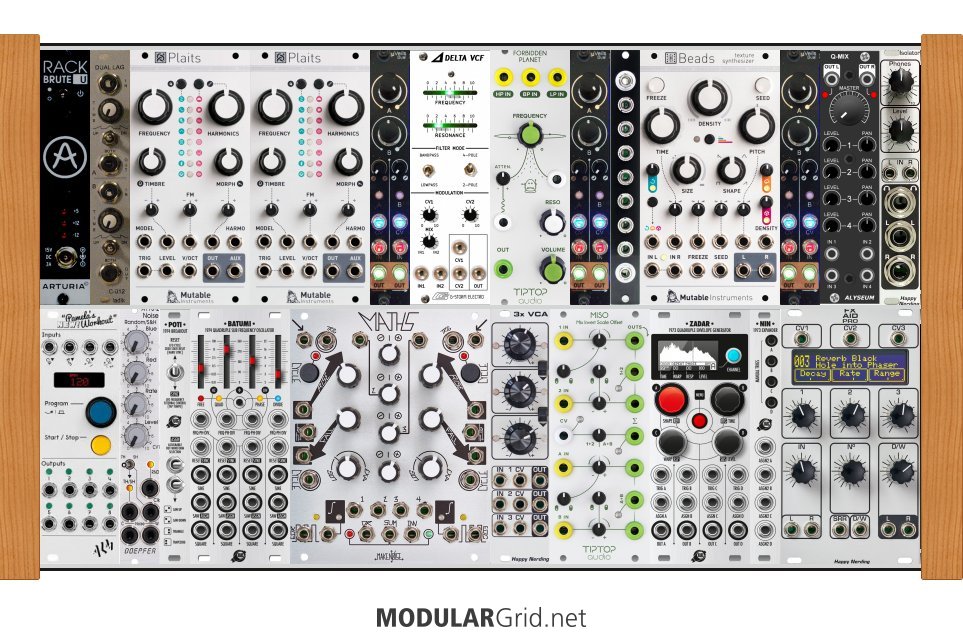I would do this a little differently. Instead of the big Intellijel Quad VCA, I would suggest three After Later dual VCAs. They use the same topology as the Intellijel (and, natch, Veils), can sum to mono, all that. Put one after the Plaits, one after the VCF, and one after the Beads and then you'll get a voice path that's got 100% VCA control over amplitude. Maybe put the Quad VCA down in the modulation row then, so that you can have amplitude control (when needed) over your modulation signals. Gonna beat on this for a bit...
LATER: OK, this wasn't all that difficult to bang out, in truth. The voice row was already pretty well-implemented, so the big focus here was to load up the modulation row while still optimizing the voice row above. So...

OK...top row has the P/S, then next to that is Ladik's dual slew limiter for portamento, which you can have on either upward CV movement, downward, or both. I then doubled the Plaits, because 1 VCO = good, but 2 VCO = BETTER. This lets you do detuning, VCO sync and so on. After those is the first VCA pair, then we get into the VCFs. I put in a G-Storm Korg Delta VCF here, since this gives you smooth, pad-like responses...which complements the Steiner-Parker clone and its aggro sound. Then the next VCA pair, followed by this multiple-looking thing from Takaab which is actually a unity-gain fixed-pan mixer. The white-ringed jacks are your "left" and "right" outputs, and you use the seven inputs to place signals between them. This sets things up for a stereo feed to the Beads. After the Beads, one more VCA pair, then you've got an Alyseum QMix for your stereo mix. Output and headphone preamp duties are handled by the new version of Happy Nerding's Isolator.
Down below, things start with the Pam's, then a Doepfer Noise/Random/S&H is next. LFO duties get handled by a Xaoc Batumi (with the Poti expander) for four potential "raw" LFO signals. Maths follows, then one of Happy Nerding's 3xVCAs for linear, DC-coupled level manipulation of modulation signals (the Quad VCA was too big), and a Tiptop MISO for altering, mangling, inverting, and pretty much any other -ing you want with the modulation. And then, a Xaoc Zadar (also expanded with the Nin) offers four EG channels. One final addition with HN's new FX Aid Pro for extra processing, and that's it.
Should be easy enough to work with...but at the same time, there's a lot of raw power under the hood now.
